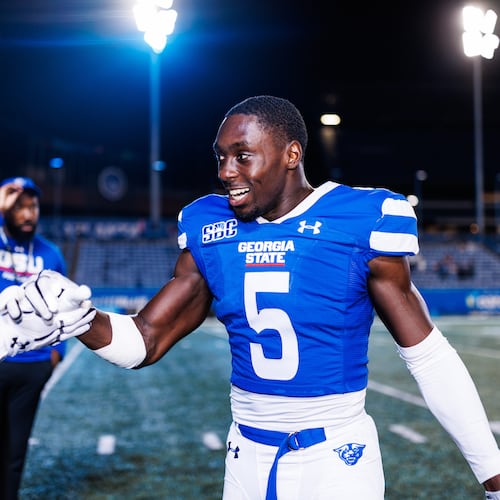New Georgia Tech athletic director Todd Stansbury brings a well-rounded background to his new position.
He began his career in college athletics administration as an academic adviser to the Georgia Tech football team and has not strayed from that intention to serve athletes.
As Central Florida AD, he was credited with increasing academic support for UCF athletes and also created a “Knights Without Borders” program that gave athletes the opportunity to participate in service projects overseas. It mirrored the “Beavers Without Borders” program that he created while being the executive associated AD at Oregon State from 2003-12. Also during that time, more than half of Beavers athletes earned GPA’s of 3.0 or higher.
In his one year as Oregon State AD, he led the implementation of a number of programs to improve the college experience for athletes. The department partnered with a nearby medical school to provide mentoring for athletes on a pre-med track. He also oversaw the development of an entrepreneurship program to provide guidance for athletes interested in starting their own businesses while in school.
The various initiatives may sound familiar to followers of Tech athletics. At the time of his hire at Oregon State last year, he said that they were the evolution of former Tech athletic director Homer Rice’s Total Person Program. Rice hired Stansbury in 1988, giving him his start in college athletics administration.
Competitively, eight different UCF teams won 12 Conference USA or American Athletic Conference championships. One of them was the Knights football team – coached by former Tech coach George O’Leary – which won the AAC in 2013 and 2014. O’Leary was 31-9 with Stansbury as his AD.
In an interview with the Oregonian in February, he said his goal was to have all of the department’s sports compete nationally. He said that he wanted to initiate a “deep dive on each sport and kind of do a retreat where each sport supervisor will kind of present their sport. The idea would be, for those that are already at the elite level, how do we make sure that we keep them there? For those that are kind of in transition, what do we need to make sure that we help them get there?”
Stansbury has also been a part of significant revenue increases. During his time working for AD Bob DeCarolis, Oregon State’s annual fund grew by 155 percent and ticket sales increased by 80 percent, according to the Oregonian. He also had a part in facilities projects that cost about $120 million. At UCF, he helped the department expand its donor base by 47 percent.
He transformed part of UCF’s Bright House Network Stadium into a beach-themed bar, with 900 premium seats and a lounge area. He led a similar project at Oregon State’s Reser Stadium, a 13,000-foot terrace in an end-zone section, that features local food, beer and wine. It was hoped that it would appeal to younger fans seeking the social experience of watching a game at home or a sports bar.
He sees himself as someone who tries to engage the staff face to face and quickly sought to establish relationships at Oregon State. He told the Oregonian that he was “trying to be everywhere that I could all the time and really have as many touch points as possible.”
About the Author
Keep Reading
The Latest
Featured

